Black, Jeremy. The British Abroad: the Grand Tour in the Eighteenth Century. Stroud: The History Press, 2003
Chapter 1
A TIME OF TRANSITION
The Enlightenment and the Industrial Revolution fostered curiosity about nature, society, institutions, human relations, and the past. Instead of relying on inherited ideas, intellectuals sought a concrete and rational understanding of phenomena based on experience and facts. This initiated an age of exploration concerned with human physiognomy, psychology, and values, wtih natural entities and their causes and significance, and with a desire to construct an accurate picture of ancient times. Focus on contemporary human conditions accompanied this empirical mindset, giving rise to conflicting ideas about the role of tradition and hierarchies in nature and society.
Artists and Artworks:
Readings:
Boime, Albert. Art in the Age of Revolution, 1750-1800. Chicago and London: University of Chicago Press, 1987
Bowron, Edgar Peters and Joseph J. Rishel, eds. Art in Rome in the Eighteenth Century. Exhibition catalogue. Philadelphia Museum of Art, 2000
Bryson, Norman. Word and Image: French Painting of the Ancien Régime. Cambridge, MA: Harvard University Press, 1981
Conisbee. Philip. French Genre Painting in the Eighteenth Century. Washington, DC: National Gallery of Art, 2007
Craske, Matthew. Art in Europe, 1700-1830. New York: Oxford University Press, 1997
Crow, Thomas. Painters and Public Life in Eighteenth-Century Paris. New Haven: Yale University Press, 1985
Diderot, Denis. Diderot on Art. New Haven: Yale University Press, 1995
Eitner, Lorenz. Neoclassicism and Romanticism 1750-1850, vol. 1: Enlightenment and Revolution. Englewood Cliffs: Prentice Hall, 1970
Fried, Michael. Absorption and Theatricality. Painting and Beholder in the Age of Diderot. Berkeley: University of California Press, 1980
Gaehtgens, Thomas. Joseph-Marie Vien, peintre du roi, 1716-1809. Paris: Athena, 1989 (in French)
Gay, Peter. The Enlightenment: The Science of Freedom. New York: W.W. Norton, 1996
Goodman, John and Thomas Crow, eds. Diderot on Art, 2 vols. New Haven: Yale University Press, 1996
Haskell, Francis and Nicolas Penny. Taste and the Antique: the Lure of Classical Sculpture, 1500-1900. New Haven, CT: Yale University Press, 1981
Israel, Jonathan. A Revolution of the Mind: Radical Enlightenment and the Intellectual Origins of Modern Democracy. Princeton: Princeton University Press, 2009
Potts, Alex. Flesh and the Ideal: Winckelmann and the Origins of Art History. New Haven: Yale University Press, 1994
Pressly, Nancy L. The Fuseli circle in Rome: early romantic art of the 1770s. Exhibition catalogue. New Haven: Yale Center for British Art, 1979
Roche, Daniel. A History of Everyday Things: The Birth of Consumption in France, 1600-1800. Cambridge: Cambridge University Press, 2000
Rosenblum, Robert. Transformations in Late Eighteenth Century Art. Princeton, NJ: Princeton University Press, 1967
Wilton, Andrew and Ilaria Bignamini, eds. Grand Tour: The Lure of Italy in the Eighteenth Century. Exhibition catalogue. London: Tate Gallery, 1996
Winckelmann, Johann Joachim. Writings on Art, David Irwin, ed. London: Phaidon, 1972
Documentation:
C.W. Ceram describes the significance of Winckelmann’s History of the Art of Antiquity (1764):
“In this masterpiece he succeeded in impressing a recognizable order of an immense accumulation of antique material that hitherto had languished as the loosest sort of aggregation. The book was written, as he proudly remarks, ‘without a model’ to go by. It broke first ground in approaching the subject of ancient art from a developmental point of view. Winckelmann built his system out of the meager accounts bequeathed to posterity by the ancients. With unerring sensitivity he groped toward original insights, and expressed them with such power of language that the cultured European world was carried away by a wave of enthusiasm for the antique ideal. This rush of surrender was of prime importance in shaping the course of archaeology in the following century. Winckelmann’s book excited a lively interest in tracking down beautiful objects wherever they lay hidden. It demonstrated means of understanding ancient cultures through their artifacts; it awakened the hope of uncovering new treasure trove, as replete with wonders as Pompeii.”
C.W. Ceram, Gods, Graves, and Scholars. The Story of Archaeology (New York: Vintage Books, 1986), 45.
Jean Jacques Rousseau believed that inequality was the unavoidable result of civilization:
“As long as men were content with their rustic huts, as long as they were limited to sewing their clothing of skins with thorn or fish bones, adorning themselves with feathers and shells, painting their bodies with various colors, perfecting or embellishing their bows and arrows, carving with sharp stones a few fishing Canoes or a few crude Musical instruments; in a word, as long as they applied themselves only to tasks that a single person could do and to arts that did not require the cooperation of several hands, the y lived free, healthy, good, and happy insofar as they could be according to their Nature, and they continued to enjoy among themselves the 24 sweetness of independent intercourse. But from the moment one man needed the help of another, as soon as they observed that it was useful for a single person to have provisions for two, equality disappeared, property was introduced, labor became necessary; and vast forests were changed into smiling Fields which had to be watered with the sweat of men, and in which slavery and misery were soon seen to germinate and grow with the crops.”
Jean-Jacques Rousseau, “Discourse on the Origins of Inequality,” (1754) in John Zerzan (ed.), Against Civilization. Readings and Reflectons (Los Angeles: Feral House, 2005), 23-4.
Web Resources
Metmuseum: French Academy in Rome

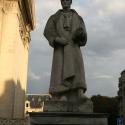
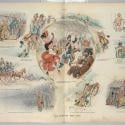
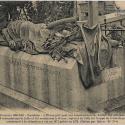
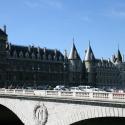
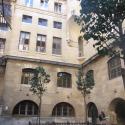
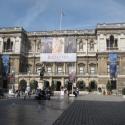
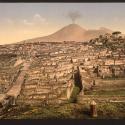
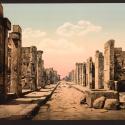
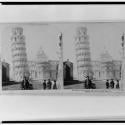
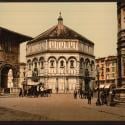
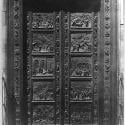
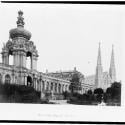
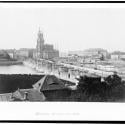
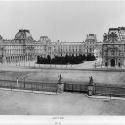
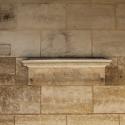
 Buy the Book
Buy the Book